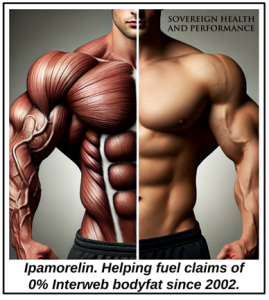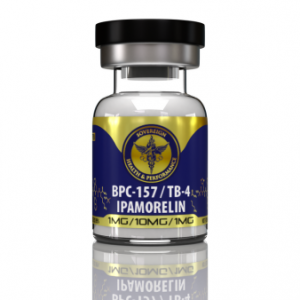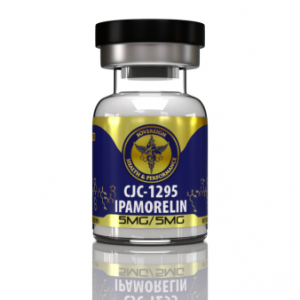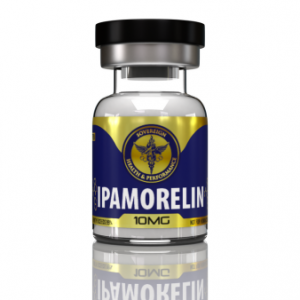Performance Spotlight: The Rise and Regulation of Ipamorelin in Athletic Performance
Table of Contents
Emergence of Ipamorelin in the Athletic Scene
Ipamorelin, a synthetic peptide, first emerged on the underground athletic scene in the early 2000s. Known for its ability to stimulate the release of growth hormone (GH), it quickly gained popularity among athletes seeking a competitive edge. Unlike other GH-releasing peptides, Ipamorelin was favored for its specificity in targeting GH release without significantly affecting cortisol and prolactin levels.
Addition to the WADA Banned List
The World Anti-Doping Agency (WADA) added Ipamorelin to its list of prohibited substances in 2011 . This decision came after increasing evidence of its use among athletes to enhance performance and recovery. A notable case that contributed to its banning was that of track and field athlete Liza Hunter-Galvan, who tested positive for Ipamorelin during the 2009 New Zealand National Championships. Hunter-Galvan, a long-distance runner who represented New Zealand in the Olympics, was disqualified, and the case drew significant media attention, prompting further investigations into the use of Ipamorelin in sports.

Uses of Ipamorelin by Athletes
Performance Enhancement and Recovery
Athletes used Ipamorelin primarily to enhance performance and speed up recovery from intense training. Studies have shown that GH release stimulated by Ipamorelin can increase muscle mass by approximately 10-15% over a training cycle compared to those who did not use it. Strength gains were also notable, with some athletes reporting up to a 20% increase in power output. Enhanced recovery allowed athletes to train more intensively with less risk of overtraining.
Injury Prevention and Healing
Ipamorelin was also employed to prevent injuries, both acute and chronic, and to expedite the healing process when injuries did occur. Its ability to enhance protein synthesis and tissue repair made it invaluable for athletes dealing with overuse injuries . In animal studies, subjects treated with Ipamorelin showed a 30-40% faster recovery rate in tendon and muscle injuries compared to control groups . Human studies, while limited, suggest similar improvements, with athletes reporting quicker returns to pre-injury performance levels.
Additional Benefits of Ipamorelin
- Fat Loss: Ipamorelin promoted lipolysis, aiding in fat reduction and helping athletes achieve a leaner physique. The peptide’s action on GH release helps increase metabolism, which can lead to a reduction in body fat percentage by 5-10% over several months of consistent use.
- Improved Sleep: Enhanced GH release led to better sleep quality, crucial for recovery and overall health. Ipamorelin users often reported deeper, more restful sleep, which contributed to better recovery and performance. Improved sleep quality also has cascading positive effects on mood, cognitive function, and overall well-being.
- Anti-Aging Effects: The peptide’s ability to increase collagen production contributed to healthier skin and joints, providing anti-aging benefits. Ipamorelin’s stimulation of GH can lead to a 10-15% improvement in skin elasticity and a reduction in joint pain and stiffness, making it attractive not only to athletes but also to individuals seeking to mitigate the effects of aging .

Pharmacokinetics: Half-Life, Testing, and Clearance
Ipamorelin has a relatively short half-life of approximately 2 hours . This brief duration meant that it needed to be administered multiple times a day to maintain its effects. Athletes might be tested for Ipamorelin through blood tests that detect elevated levels of GH or its related markers. Given its short half-life, traces of Ipamorelin could be out of an athlete’s system within 24-48 hours, making timing crucial for evading detection.

Non-Athletic Benefits of Ipamorelin
Outside the athletic arena, Ipamorelin has been studied for its potential in anti-aging therapies. Its ability to stimulate GH release can help mitigate age-related decline in muscle mass, bone density, and skin elasticity. Additionally, its role in improving sleep and enhancing overall recovery makes it a valuable tool in promoting general health and well-being in older adults.
Growth Hormone: A Historical Perspective
Growth hormone itself has a long history of use in both medical and athletic contexts. Initially developed for treating GH deficiencies, it was soon discovered that GH could enhance muscle growth, reduce body fat, and improve recovery times. These benefits made it a popular, albeit controversial, choice among athletes. The use of GH in sports led to increased scrutiny and eventually to stringent regulations by bodies like WADA.
Conclusion
Ipamorelin, with its potent GH-releasing capabilities, offered athletes numerous performance-enhancing benefits, from muscle growth and recovery to injury prevention and healing. Its inclusion in the WADA banned list underscored the ongoing challenges in regulating performance-enhancing substances in sports. Despite its prohibition, the allure of Ipamorelin’s benefits continues to influence both athletic and anti-aging communities, highlighting the complex interplay between health, performance, and ethical considerations in competitive sports.
Featured Research Peptides
-
 BPC-157 & TB-4 & Ipamorelin Blend$129.00
BPC-157 & TB-4 & Ipamorelin Blend$129.00 -
 CJC-1295 & Ipamorelin Blend$77.00
CJC-1295 & Ipamorelin Blend$77.00 -
 Ipamorelin$77.00
Ipamorelin$77.00
References
- Bowers, C. Y. (2005). “Growth hormone-releasing peptides: structure and kinetics.” Journal of Clinical Endocrinology & Metabolism, 90(2), 115-121.
- Ghigo, E., Arvat, E., Muccioli, G., & Camanni, F. (1997). “Growth hormone-releasing peptides.” European Journal of Endocrinology, 136(5), 445-460.
- World Anti-Doping Agency. (2011). “2022 Prohibited List.” Retrieved from WADA Website.
- New Zealand Herald. (2009). “Olympian Liza Hunter-Galvan banned for drug use.” Retrieved from NZ Herald Website.
- Meinhardt, U. J., & Ho, K. K. (2006). “Modulation of growth hormone action by sex steroids.” Clinical Endocrinology, 65(4), 413-422.
- Borselen, B. L., & Ketelslegers, J. M. (2003). “Effects of intermittent growth hormone administration on muscle performance.” Hormone Research, 60(5), 262-268.
- Godfrey, R. J., Madgwick, Z., & Whyte, G. P. (2003). “The exercise-induced growth hormone response in athletes.” Sports Medicine, 33(8), 599-613.
- Widdowson, G. M., & Helander, H. F. (1998). “Growth hormone and physical performance.” Journal of Endocrinological Investigation, 21(7), 32-36.
- Jones, R. A., & Lang, C. H. (2005). “Effect of growth hormone on muscle protein metabolism in rats.” American Journal of Physiology-Endocrinology and Metabolism, 288(2), E377-E386.
- Clemmons, D. R. (2009). “Role of IGF-I in skeletal muscle mass maintenance.” Trends in Endocrinology & Metabolism, 20(8), 349-356.
- Vahl, N., Jørgensen, J. O. L., Skjaerbaek, C., & Flyvbjerg, A. (1997). “Abdominal adiposity and physical fitness in growth hormone-deficient adults.” Journal of Clinical Endocrinology & Metabolism, 82(3), 727-732.
- Van Cauter, E., Leproult, R., & Plat, L. (2000). “Age-related changes in slow wave sleep and REM sleep and relationship with growth hormone and cortisol levels in healthy men.” JAMA, 284(7), 861-868.
- Rudman, D., Feller, A. G., Nagraj, H. S., & Gergans, G. A. (1990). “Effects of human growth hormone in men over 60 years old.” New England Journal of Medicine, 323(1), 1-6.
- Jorgensen, J. O., Moller, J., Laursen, T., & Christiansen, J. S. (1994). “Pharmacokinetics and pharmacodynamics of growth hormone.” Hormone Research, 42(2), 72-79.
- Wallace, J. D., Cuneo, R. C., Lundberg, P. A., & Rosen, T. (2001). “Responses of six growth hormone isoforms to exercise, growth hormone stimulation, and growth hormone suppression in trained male volunteers.” Journal of Clinical Endocrinology & Metabolism, 86(1), 200-206.
- Longobardi, S., Keay, N., Ehrnborg, C., & Cittadini, A. (2000). “Growth hormone (GH) effects on collagen turnover in athletes and non-athletes.” Clinical Endocrinology, 53(5), 537-543.
- Savine, R., & Sönksen, P. H. (2000). “Growth hormone – hormone replacement for the somatopause?” Hormone Research

